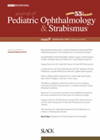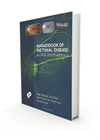You searched for "Lucentis"
Neuro-ophthalmology consequences of Lyme disease
This study sought to review the seasonality and the occurrence of Lyme disease within their institution with a focus on neuro-ophthalmic consequences. This was a retrospective study of 212 children: 50 (24%) with neuroborreliosis (NB). There was an increase in...Posner-Schlossman Syndrome (PSS) European Study Group: study protocol and baseline patient characteristics of a multicentre study
30 June 2025
| Jonathan Chan
|
EYE - Vitreo-Retinal
This is a retrospective, multicentre (11 centres) study of European patients (total 107; Caucasians in 93.4%). Age ranged between 11 and 76 years with mean age 42 ±15 years. Best corrected vision was >0.5logMAR in 80.3% of the eyes, and...
Lessons from an unusual case of syphilis
3 August 2023
| Ryian Mohamed, Shaman Dolly, Jonathan Than, Shweta Anand
|
EYE - Vitreo-Retinal
The rise of syphilis transmission rates over the past two decades has been one of public health’s great puzzles. In the UK, the situation has reached epidemic levels, with a 126% increase between 2013 and 2018 [1]. We present a...
Things I’d tell my medical school self, had I known my first year on the job would be during a global pandemic
5 June 2020
| Nikolaos Tzoumas
|
EYE - General
In a conversation with his younger self, a foundation doctor reflects on the contrast between his expectations of medicine at university and the reality of working during the coronavirus pandemic. Every doctor arrives at medical school with nervous anticipation, yet...
2018/19 Ophthalmology Honours results announced
13 March 2019
Recipients of the 2018/19 Ophthalmology Honours by Bayer were recognised during a presentation held at BMA House, London.
Major grant secured to transform immune cell imaging research
A research team has been awarded significant funding by the National Institute for Health and Care Research (NIHR) to develop an innovative drug-device combination that aims to revolutionise how individual immune cells are monitored and treated in patients at Moorfields...Crystalline keratopathy in monoclonal gammopathy of undetermined significance
2 April 2025
| Kar Yen Phoong
|
EYE - Cornea
Monoclonal gammopathies encompass a group of plasma cell disorders characterised by the excessive production of abnormal monoclonal immunoglobulins in the bloodstream [1]. This category includes multiple myeloma, monoclonal gammopathy of undetermined significance (MGUS), amyloidosis and other lymphoproliferative disorders. Monoclonal gammopathy...
OBITUARY: A short tribute to Mike Sanders, Neuro-ophthalmologist
3 October 2022
| James Acheson
|
EYE - Neuro-ophthalmology
Mike Sanders was Consultant Neuro-Ophthalmologist at St Thomas’ Hospital and the National Hospital, Queen Square in London, 1969 to 1999. He passed away on 25 July of this year. Over this 30-year period he had huge influence over the evolution...
Inaugural IP education session hailed a hit
A pioneering session has brought together a group of independent prescribers to create content ‘for practitioners by practitioners’ for use in real world scenarios.Moorfields: The 2025 macula course
2 June 2025
-5 June 2025
The 2025 Macula course will take place from 2nd - 5th June 2025. Bookings are now open. Retinal diseases are a major cause of blindness. Diagnostic investigations, understanding of disease mechanisms, new therapies, and the evidence base, have all evolved...
Birdshot chorioretinopathy: an important differential
1 April 2015
| Zaria Ali, Mohammed Alarbi, Salwa Abugreen
|
EYE - Cataract, EYE - Cornea, EYE - General, EYE - Glaucoma, EYE - Imaging, EYE - Neuro-ophthalmology, EYE - Oculoplastic, EYE - Oncology, EYE - Orbit, EYE - Paediatrics, EYE - Pathology, EYE - Refractive, EYE - Strabismus, EYE - Vitreo-Retinal
Birdshot chorioretinopathy (BSCR) is a relatively uncommon cause of posterior uveitis which often has a relapsing and remitting course [1,2]. We present a case which demonstrates how remission can be obtained for several years using cyclosporine. Case report A 44-year-old...
Handbook of Retinal Disease: a case based approach
1 August 2016
| Sofia Rokerya
|
EYE - Vitreo-Retinal
This book is suitable for all doctors, particularly ophthalmologists, who want to further their knowledge and understanding of retinal pathologies and keep up to date. The case-based format is effective in evoking an interactive approach to differential diagnosis. The tabulation...






